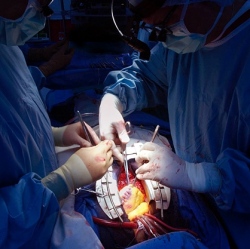
Surgeons at Boston Children’s Hospital started using 3D-printed copies of patients’ affected body parts to prepare for procedures last year. Now, that move has helped save the lives of four children aged two months to 16 years old who suffered from life-threatening blood vessel malformation in their brains.
Their condition gave ride to distinctive anatomies that one of the hospital’s neurosurgeon, Edward Smith, said were really tricky to operate on. So, the doctors used a combination of 3D printing and synthetic resins to conjure up copies of the kids’ deformed vessels, along with nearby normal counterparts and surrounding brain anatomy. That gave them the chance to practice extensively beforehand and reduce possible complications on the operating table.
Smith said the models allowed them to "view [the formations] from different angles, practice the operation with real instruments and get tactile feedback." It was especially beneficial for three of the four patients, as they had arteriovenous malformations (AVMs, their arteries and veins were all tangled up, that required the surgeons to cut blood vessels as quickly as possible, and in a certain sequence.
Thanks to their preparations, the surgeons managed to fix the kids’ distorted blood vessels and cut surgery time by 30 minutes each. Smith and his colleague Darren Orbach now plan to use 3D printing to train younger doctors and for even trickier cases in the future.
